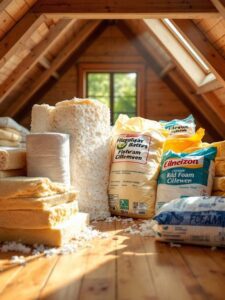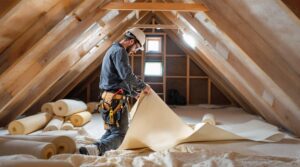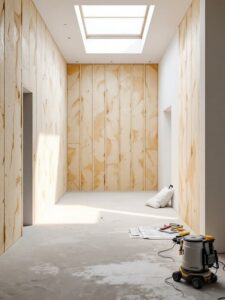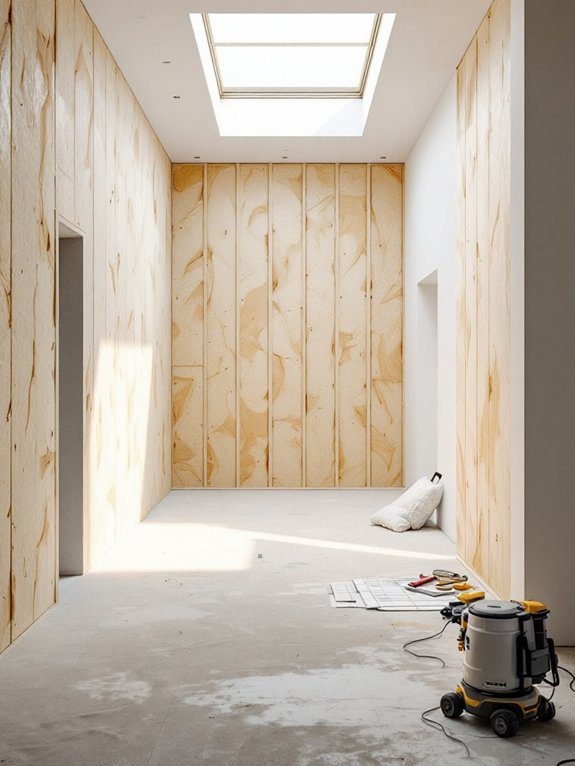External wall insulation delivers significant financial returns despite initial costs of $5,000-$15,000. You'll see 20-40% annual reductions in heating and cooling bills, translating to $300-600 savings per year in moderate climates. Your property value will increase by 5-10%, while government incentives can offset 30-50% of installation costs. With minimal maintenance over its 25-30 year lifespan and enhanced energy efficiency ratings, the long-term economic benefits become increasingly clear.
Key Takeaways
- External wall insulation reduces heating and cooling costs by 20-40% annually, saving $300-600 for average homes in moderate climates.
- Property values increase by 5-10% after installation, making insulation a valuable long-term real estate investment.
- Initial costs of $5,000-$15,000 are typically recovered within 5-10 years through consistent energy bill savings.
- Government programs and utility rebates can cover up to 50% of installation costs, reducing the initial financial burden.
- Minimal maintenance requirements over a 25-30 year lifespan ensure low ongoing costs while maintaining energy efficiency benefits.
Understanding the Upfront Investment Vs Long-Term Returns

While external wall insulation requires a significant initial investment ranging from $5,000 to $15,000 for an average home, the long-term financial benefits typically outweigh these upfront costs.
You'll see the return on investment through reduced energy bills within 5-10 years, depending on your climate zone and energy prices. The upfront costs are offset by annual heating and cooling savings of 20-40%, making your home more energy-efficient and environmentally responsible.
Like many homeowners who've made this investment, you'll benefit from increased property value, with studies showing insulated homes selling for 5-10% more than non-insulated properties.
When you factor in potential tax incentives, utility rebates, and the long-term savings on energy costs, external wall insulation proves to be a financially sound decision for your home's future.
Energy Bill Savings: Breaking Down the Numbers
Three key factors determine your potential energy bill savings with external wall insulation: your local climate, current energy rates, and the size of your home.
Through thorough cost analysis, homeowners typically save 20-40% on heating and cooling costs annually after installation.
For a 2,000-square-foot home, you'll likely reduce your energy consumption by 15-25 kilowatt-hours per square meter yearly. This translates to average savings of $300-600 annually in moderate climates, with higher savings in extreme weather regions.
Your home's energy efficiency rating can improve by 2-3 bands after installation, boosting both comfort and property value.
When combined with other insulation measures, your total energy savings can reach up to 50% – a significant return that makes the initial investment increasingly worthwhile as energy prices continue to rise.
Property Value Enhancement Through Insulation
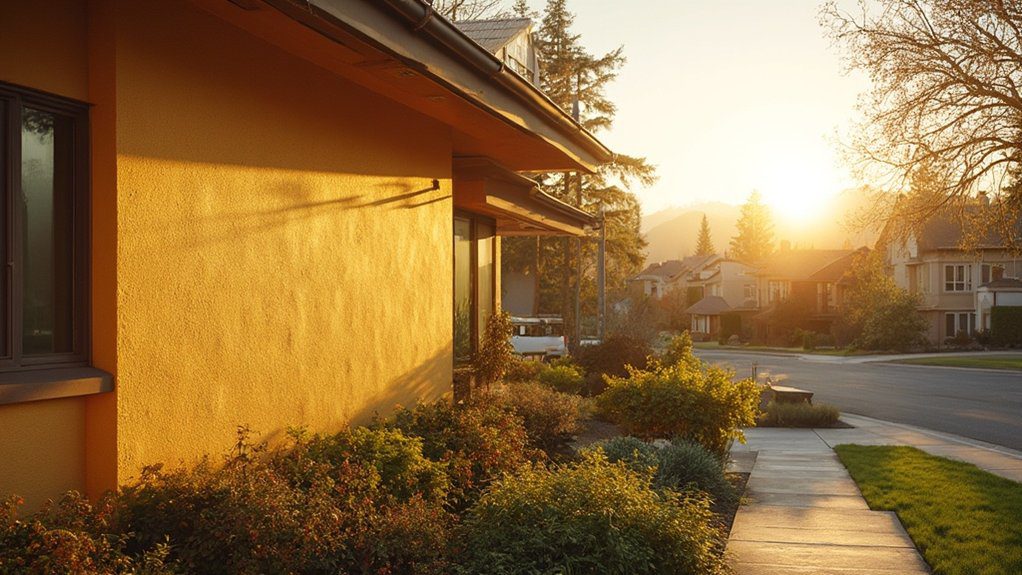
Because external wall insulation greatly improves a home's thermal performance, it can increase your property's market value by 6-8% on average.
Beyond the immediate insulation benefits, you'll position your home as an energy-efficient investment that appeals to environmentally conscious buyers in today's competitive market.
- Modern external wall systems enhance property aesthetics through contemporary finishes and textures, making your home stand out in the neighborhood.
- Energy Performance Certificates (EPCs) typically improve by 2-3 bands after installation, making your property more attractive to potential buyers and renters.
- Homes with external wall insulation often sell faster, with data showing a 25% reduction in average time-to-sale compared to non-insulated properties.
When you invest in external wall insulation, you're not just saving on energy bills – you're building long-term equity in your property.
Government Incentives and Available Rebates
To help offset external wall insulation costs, you'll find numerous government programs offering financial support across different regions.
These initiatives typically cover 30-50% of your installation expenses, with some programs providing up to $2,000 in direct rebates.
You'll want to explore local government programs like the Weatherization Assistance Program (WAP) and Home Energy Assistance Program (HEAP).
Many utility companies also partner with state agencies to offer additional rebate options, including zero-interest loans and tax credits.
To maximize your benefits, combine multiple incentives – it's often possible to stack federal, state, and local programs.
Check your eligibility through your state's energy office website or contact a certified contractor who can guide you through available incentives in your area.
Maintenance Costs and Lifetime Durability

While initial installation costs may seem substantial, external wall insulation typically requires minimal maintenance over its 25-30 year lifespan.
You'll find that maintenance frequency is remarkably low, often limited to basic visual inspections and occasional cleaning.
Your investment in external wall insulation delivers outstanding durability through:
- Weather-resistant materials that protect against UV damage, rain, and temperature fluctuations
- Impact-resistant surfaces that withstand everyday wear and maintain structural integrity
- Self-cleaning properties in modern finishes that reduce the need for regular washing
With proper installation, your insulation lifespan can extend beyond three decades.
You'll only need to address minor repairs if physical damage occurs, making it one of the most cost-effective home improvements you can choose.
Regular professional inspections every 5-7 years will help guarantee peak performance throughout its lifetime.
Frequently Asked Questions
Can External Wall Insulation Be Installed in Listed or Historic Buildings?
Like restoring a classic painting, you'll need special listed building regulations approval first. You can insulate historic buildings, but you'll have to choose insulation material options that preserve the property's original character and features.
How Long Does the Installation Process Typically Take to Complete?
You'll typically see a project timeline of 2-3 weeks for your external wall insulation installation duration. The time varies based on your home's size, weather conditions, and any preparatory work that's needed.
Will External Wall Insulation Affect the Appearance of My Windows?
Like a picture frame enhancing artwork, your window aesthetics won't suffer. The insulation impact actually improves your windows' appearance by creating clean, modern lines and you'll have options for decorative rendering around them.
Does External Wall Insulation Work Well in Both Hot and Cold Climates?
Yes, you'll find external wall insulation offers excellent climate adaptability in any weather. It helps maintain your home's energy efficiency by keeping heat out during summer and retaining warmth in winter, benefiting your whole household.
Can I Install External Wall Insulation Myself to Save Money?
Sure, you could DIY install external wall insulation, but you'd risk costly mistakes. Professional installation's critical for proper moisture barriers, thermal bridging, and building codes. The initial cost savings aren't worth compromising long-term performance.
Conclusion
External wall insulation is like wrapping your home in a thermal blanket – one that pays dividends year after year. You'll see returns through a 45-50% reduction in heating costs, increased property value of up to 15%, and potential government rebates covering 30% of installation costs. When you factor in its 25-year lifespan and minimal maintenance requirements, the initial investment transforms into substantial long-term financial gains.

